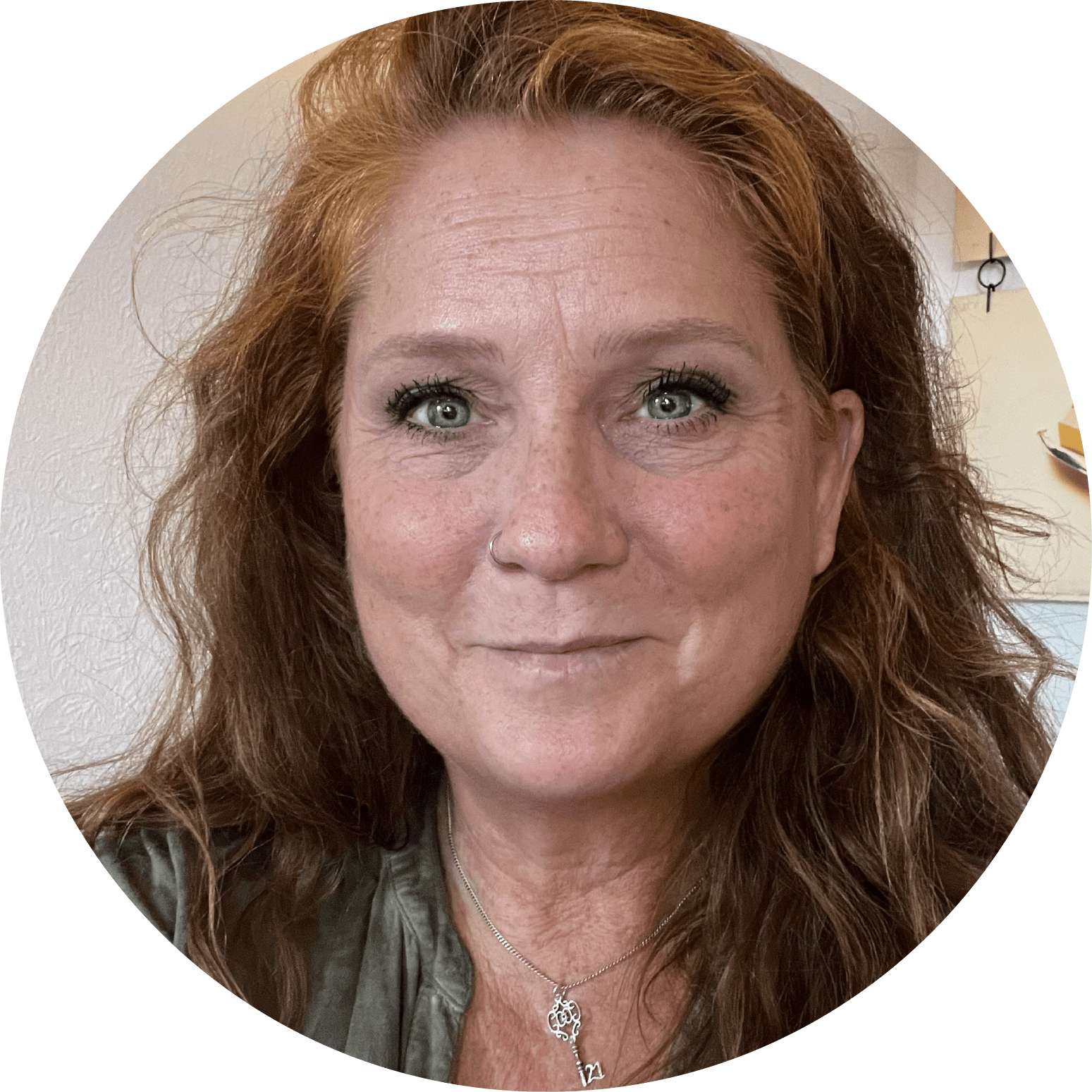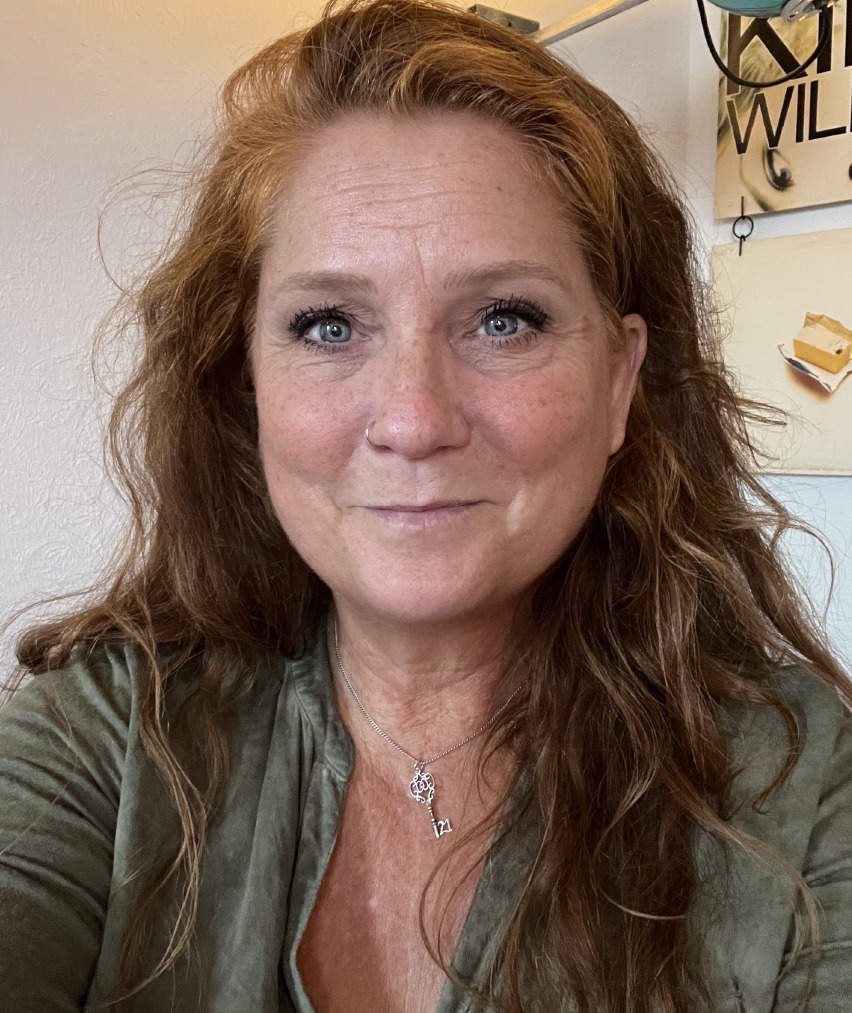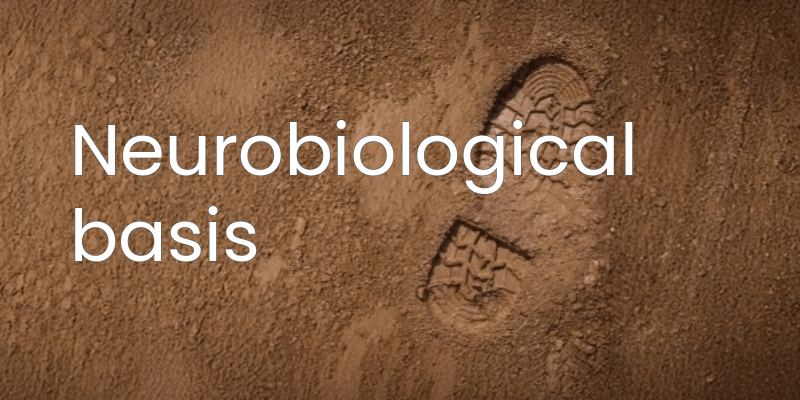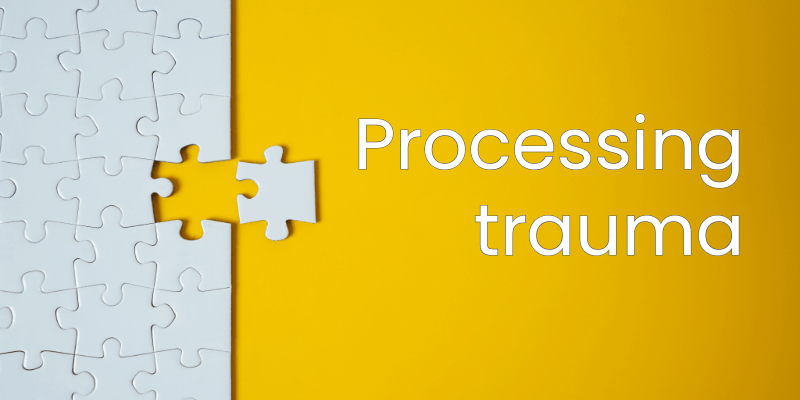Therapy for Trauma & Dissociation
Before trauma can be processed, it’s important that your neurobiology first develops the capacity to handle it.
Neurobiological basis
In therapy, we begin by looking at how your neurobiology has structurally adapted to overwhelming experiences in order to survive. The automatic responses that come from that adaptation often remain active—even long after the actual danger has passed. This can result in feeling too much or too little, unpredictable emotions, impulsive behavior, social anxiety, overanalyzing, and more. You could say your neurobiology has developed a default state that hardly recognizes safety or rest, and therefore cannot shift into a different state.
Our first focus is on developing awareness and learning to recognize the automatic internal and external patterns driven by your unconscious brain. This forms the basis of how you experience the world and how you respond to it. Your system has learned not to be present in reality, and not to stay with your internal experiences. This creates a dissociative state, which also disrupts your neurobiology—especially the vestibular system in your brainstem, which helps you know where you are in relation to your environment. As a result, there’s a loss of direction, which creates a profoundly unsafe foundation.
From a dissociative state, processing trauma is incredibly difficult. There’s a lack of orientation and a missing anchor of safety. That’s why it’s so important for your neurobiology to relearn how to be on solid ground—literally—and how to be present in the current moment and environment. It’s also essential to clarify the difference between patterns from the past and those in the present, because with trauma, past experiences often continue to shape your current responses. You’ll learn to recognize the signals that indicate you’re shifting out of grounded presence into a dissociative state—and when that happens.
We also pay close attention to stabilization, especially if you’re familiar with risky behaviors as part of your automatic responses. Together, we’ll look for ways to bring more stability—by consistently returning to grounded presence, but also by exploring alternative ways to meet the deeper needs those behaviors are trying to address, in a safer and more sustainable way.
Trauma processing
When there is enough grounded presence during a session, we can begin to explore how trauma may have developed and why your neurobiology had to shift into survival mode. We don’t approach this through storytelling or direct memory recall, and we don’t rely on talking or cognitive understanding as a starting point. Instead, we continue to work through the lens of neurobiology—specifically by using bodily sensations as a way to gain insight into internal processes like emotions, thoughts, beliefs, visual representations, and the urgent impulse toward certain behaviors.
Because biology is always logical—without exception. I deeply believe that. It would make no sense for nature to deliberately work against itself. Something only happens if there’s a reason for it—if your survival is at stake. And survival is powerful; it imprints itself into your neurobiology with a clear message: never again. You can’t simply change that by thinking—especially not from a dissociated state.
So when we process trauma, we return to the basics: What was the trigger? Why was this response necessary?
From that place of understanding—and respect for how your system protected you without conscious input—we begin to explore whether it’s possible to separate past from present. The goal is to allow your system to “refile” the past differently in the brain: not as a current threat, but as something that happened then, now seen from the perspective of an adult who is safe in the present moment.
Integration
This is how the two brain circuits—described on the Trauma and Dissociation page—begin to reconnect. The thinking loop and the feeling loop begin to communicate again, allowing regulation to happen naturally. That’s the goal. True trauma healing requires a neurobiology that is capable of this—and the integration of these brain processes is the foundation.
In therapy, we begin by looking at how your neurobiology has structurally adapted to overwhelming experiences in order to survive. The automatic responses that come from that adaptation often remain active—even long after the actual danger has passed. This can result in feeling too much or too little, unpredictable emotions, impulsive behavior, social anxiety, overanalyzing, and more. You could say your neurobiology has developed a default state that hardly recognizes safety or rest, and therefore cannot shift into a different state.
Our first focus is on developing awareness and learning to recognize the automatic internal and external patterns driven by your unconscious brain. This forms the basis of how you experience the world and how you respond to it. Your system has learned not to be present in reality, and not to stay with your internal experiences. This creates a dissociative state, which also disrupts your neurobiology—especially the vestibular system in your brainstem, which helps you know where you are in relation to your environment. As a result, there’s a loss of direction, which creates a profoundly unsafe foundation.
From a dissociative state, processing trauma is incredibly difficult. There’s a lack of orientation and a missing anchor of safety. That’s why it’s so important for your neurobiology to relearn how to be on solid ground—literally—and how to be present in the current moment and environment. It’s also essential to clarify the difference between patterns from the past and those in the present, because with trauma, past experiences often continue to shape your current responses. You’ll learn to recognize the signals that indicate you’re shifting out of grounded presence into a dissociative state—and when that happens.
We also pay close attention to stabilization, especially if you’re familiar with risky behaviors as part of your automatic responses. Together, we’ll look for ways to bring more stability—by consistently returning to grounded presence, but also by exploring alternative ways to meet the deeper needs those behaviors are trying to address, in a safer and more sustainable way.
Therapies & Tools
Finding Solid Ground
Developed by: Ruth Lanius, Bethany Brand, Hugo Schielke, and Francesca Schiavone
Finding Solid Ground (FSG) is centered around presence and focused on stabilization. It can be combined with other therapeutic models. The program was developed based on neurological research and neurobiological insight. During studies into the effectiveness of this approach, researchers measured changes in brain connectivity and combined those findings with the personal experiences of individual and group participants.
The program does not immediately focus on safety and emotions, as this can be too overwhelming for someone who is not fully present and enters emotional states from a dissociative place. Learning to ground and return to the present moment increases the felt sense of safety, supports clearer thinking, raises awareness of what’s happening internally and externally, and creates more space for recognizing options and resources.
The program also places strong emphasis on awareness and practice between sessions. In addition, it incorporates techniques from Deep Brain Reorienting.
Tools
I use various other tools if they support you in grounding and presence—such as elements from Polyvagal Theory, Sensorimotor Psychotherapy, EFT (tapping), breathwork techniques, and psychoeducation about neurobiology. This helps build understanding of why you do what you do—and that it’s primarily based on past logic and necessity.
When there is enough grounded presence during a session, we can begin to explore how trauma may have developed and why your neurobiology had to shift into survival mode. We don’t approach this through storytelling or direct memory recall, and we don’t rely on talking or cognitive understanding as a starting point. Instead, we continue to work through the lens of neurobiology—specifically by using bodily sensations as a way to gain insight into internal processes like emotions, thoughts, beliefs, visual representations, and the urgent impulse toward certain behaviors.
Because biology is always logical—without exception. I deeply believe that. It would make no sense for nature to deliberately work against itself. Something only happens if there’s a reason for it—if your survival is at stake. And survival is powerful; it imprints itself into your neurobiology with a clear message: never again. You can’t simply change that by thinking—especially not from a dissociated state.
So when we process trauma, we return to the basics: What was the trigger? Why was this response necessary?
From that place of understanding—and respect for how your system protected you without conscious input—we begin to explore whether it’s possible to separate past from present. The goal is to allow your system to “refile” the past differently in the brain: not as a current threat, but as something that happened then, now seen from the perspective of an adult who is safe in the present moment.
Integration
This is how the two brain circuits—described on the Trauma and Dissociation page—begin to reconnect. The thinking loop and the feeling loop begin to communicate again, allowing regulation to happen naturally. That’s the goal. True trauma healing requires a neurobiology that is capable of this—and the integration of these brain processes is the foundation.
Therapies & Tools
Internal Family Systems (IFS)
Developed by: Richard Schwartz and the IFS Institute
IFS is not originally a trauma therapy, but it can be integrated into a broader approach in which the neurobiology of trauma serves as the foundation. IFS is the most comprehensive parts-based therapy model. It is based on the idea that we are, by nature, made up of different parts—often from a survival perspective. For example, when buying a new car, there’s rarely just one internal opinion. That’s intentional: you’re supposed to weigh all sides, especially to ensure safety. The stronger and more conflicting those internal voices are, the more chaotic it becomes—and decision-making gets difficult.
In trauma, many parts are highly polarized because they’ve developed beliefs and taken on roles rooted in survival—usually at a young age. One of the clearest things IFS reveals is how present the past still is in these internal dynamics. These parts carry “young” feelings and often react in ways that feel powerless or hopeless—just like a child, who has less control over their environment and internal world. There are younger and older parts, as well as what IFS calls Exiles (parts that hold the emotional wounds) and Protectors (parts that prevent those wounds from becoming overwhelming). The goal of IFS is to understand these parts and help them from the place of the adult Self—the centered, present core of who you are now.
When you first establish neurobiological safety, the Self becomes more accessible, and can then offer support to the parts. Often, Manager parts—linked to the cortex—are in control. These parts try to maintain order through thinking, analyzing, or suppressing emotion and external threats. When someone is dissociated, it can be very hard—for both the person and the therapist—to tell how much Self-energy is actually present. These are called Self-like parts. This is especially tricky when someone doesn’t even know where the “present moment” is. That’s exactly what makes the combination with Finding Solid Ground so powerful.
Somatic & IFS-informed EMDR
EMDR is a well-known trauma therapy, especially for PTSD following a clear, overwhelming experience. But with developmental trauma, things are different: the memories are often implicit, not chronological or narrative. They live on as physical or emotional reactions, stored in the deeper layers of the neurobiology. That raises the question of whether classical EMDR is a good fit.
Still, EMDR is increasingly being adapted to address more complex forms of trauma. By linking it to bodily sensations and inner parts, even implicit memories can be accessed. Eye movements have also been shown to affect the visual cortex, which plays a key role in trauma processing. This is where EMDR begins to overlap with Deep Brain Reorienting. The field continues to evolve—and it’s becoming increasingly clear how all systems in the body work together in service of survival.
About Nikki & getting started

I’m Nikki Nooteboom, mother of two adult daughters. In 2019, my life collapsed—I simply couldn’t keep everything together anymore. Over the course of 25 years, I’d had plenty of therapy, but it was always talk therapy. Each time, I ended up right back where I started—or worse. Like so many who live with trauma, my survival mode meant running a constant marathon. Until I couldn’t anymore. Especially because I had turned to alcohol to cope.
When Covid hit and I nearly lost everything—my work as a photographer, my home, and almost my life—it became painfully clear that something had to change. After reading The Body Keeps the Score, I began studying full-time: Applied Psychology, Neurobiology, various therapy models, EMDR, philosophy… For a full list of my education and training, please visit my LinkedIn profile.
At the same time, I sought therapy from several international practitioners. The results varied, but they gave me a wide and practical understanding of the diversity of available models. Alongside this, I launched my own practice. Today, I work online with clients around the world.
The most recent training I completed was Finding Solid Ground by Ruth Lanius and Bethany Brand. This new therapy program is fully grounded in neurobiology and supported by neurological research. That means the outcomes can be measured directly in the brain, rather than being interpreted solely through behavioral responses, as is often the case in traditional psychology. You can read the research paper [here].
This program marked a turning point in my own approach to therapy, shifting my focus even more clearly to trauma healing methods backed by neurobiological insight.
In 2023, I began offering training to healthcare organizations, independent therapists, and schools and educational programs both in the Netherlands and abroad—sharing this trauma-informed, neurobiological approach known as Trauma Informed Care.
Just like we can’t build a house on the sea, we need a solid neurobiological foundation if we want real and lasting healing from trauma.
Please don’t wait until there’s no other option. And if that point has already come: don’t believe anyone who tells you it’s hopeless. It’s not.
Want to get in touch?
Interested in working with me? You’re welcome to book a free introductory call. It lasts up to 30 minutes and gives us both a chance to see if there’s a good fit.
Please note: after the call, there may not be an immediate opening. This depends on the current waitlist, which rarely exceeds three months.
The sessions
Each session lasts 60 minutes and costs €98 including VAT for private clients.
If you’re billing through your own business or your employer, the rate is €98 excluding VAT.
About Nikki and getting started

I’m Nikki Nooteboom, mother of two adult daughters. In 2019, my life collapsed—I simply couldn’t keep everything together anymore. Over the course of 25 years, I’d had plenty of therapy, but it was always talk therapy. Each time, I ended up right back where I started—or worse. Like so many who live with trauma, my survival mode meant running a constant marathon. Until I couldn’t anymore. Especially because I had turned to alcohol to cope.
When Covid hit and I nearly lost everything—my work as a photographer, my home, and almost my life—it became painfully clear that something had to change. After reading The Body Keeps the Score, I began studying full-time: Applied Psychology, Neurobiology, various therapy models, EMDR, philosophy… For a full list of my education and training, please visit my LinkedIn profile.
At the same time, I sought therapy from several international practitioners. The results varied, but they gave me a wide and practical understanding of the diversity of available models. Alongside this, I launched my own practice. Today, I work online with clients around the world.
The most recent training I completed was Finding Solid Ground by Ruth Lanius and Bethany Brand. This new therapy program is fully grounded in neurobiology and supported by neurological research. That means the outcomes can be measured directly in the brain, rather than being interpreted solely through behavioral responses, as is often the case in traditional psychology. You can read the research paper [here].
This program marked a turning point in my own approach to therapy, shifting my focus even more clearly to trauma healing methods backed by neurobiological insight.
In 2023, I began offering training to healthcare organizations, independent therapists, and schools and educational programs both in the Netherlands and abroad—sharing this trauma-informed, neurobiological approach known as Trauma Informed Care.
Just like we can’t build a house on the sea, we need a solid neurobiological foundation if we want real and lasting healing from trauma.
Please don’t wait until there’s no other option. And if that point has already come: don’t believe anyone who tells you it’s hopeless. It’s not.
Want to get in touch?
Interested in working with me? You’re welcome to book a free introductory call. It lasts up to 30 minutes and gives us both a chance to see if there’s a good fit.
Please note: after the call, there may not be an immediate opening. This depends on the current waitlist, which rarely exceeds three months.
The sessions
Each session lasts 60 minutes and costs €98 including VAT for private clients.
If you’re billing through your own business or your employer, the rate is €98 excluding VAT.










